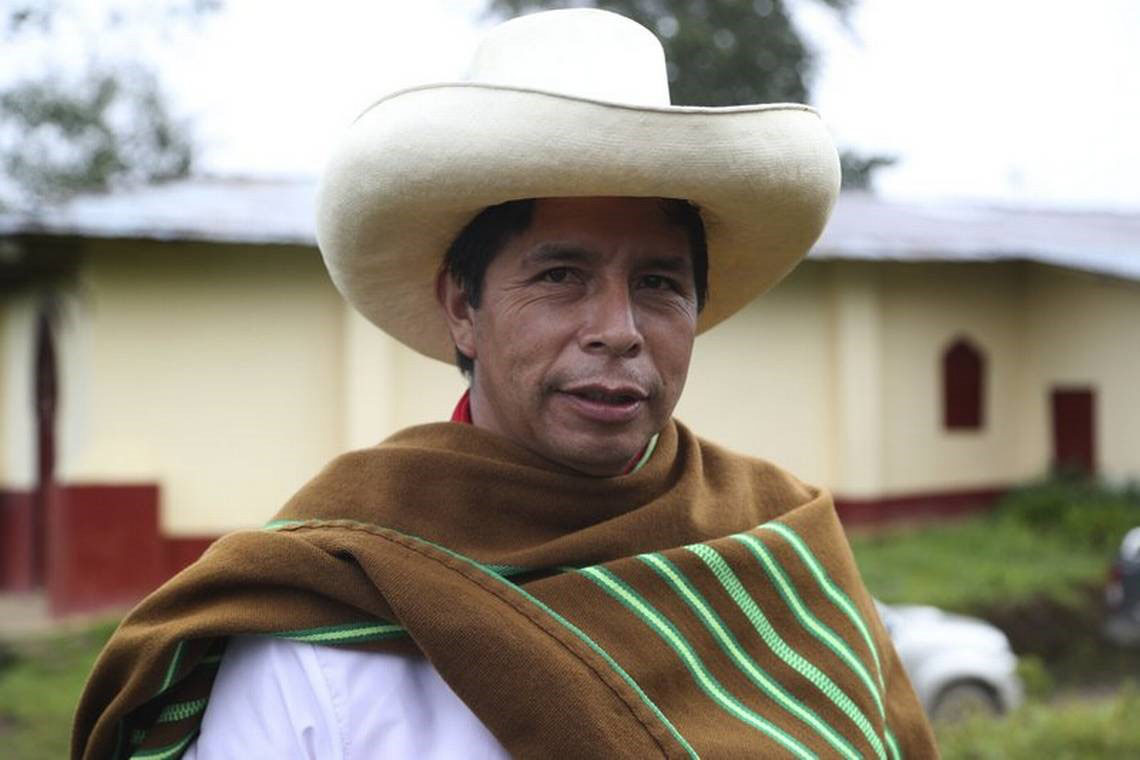LIMA, (Reuters) – Hundreds of Peruvians demonstrated outside the elections office in Lima yesterday as the presidential vote count neared its end, with socialist Pedro Castillo holding on to a narrow lead and tensions rising over contested ballots and accusations of fraud.
Castillo, who has worried markets and mining firms with his plans to shake up the copper-rich country’s politics, held a slim lead of some 50.2%, ahead of right-wing rival Keiko Fujimori on 49.8%, with over 97% of the votes tallied.
On Monday, Fujimori made unsubstantiated accusations of fraud, adding fuel to an already tense situation, and publicized a hashtag for Twitter users to submit instances of what she called “irregularities.”
Electoral experts, including international observers, told Reuters that no fraud had been observed.
“We are protesting because of the flagrant electoral steal. The (elections office) is playing in favor of Mr. Castillo, they are trying to commit fraud in his favor,” said Fernando Tavera, a pro-Fujimori protester outside the elections office.
Castillo backers also flocked to the elections office to voice their support in counter-protests. Both sets of demonstrations were peaceful.
Lourdes Morales, who supports Castillo, said, “We think it’s a scandal the way (Fujimori) has increased her voting numbers,” referring to how the conservative had slowly narrowed the gap on Castillo for most of the day. “And that generates uncertainty,” she said.
Lima is where Fujimori has the most support. Castillo, the son of peasant farmers, had surged late in the count as more of the rural vote came in, leading by over 100,000 votes at one point. However, buoyed by international votes, Fujimori began to gain ground again.
The current margin is some 84,000 votes.
Fujimori, the scion of a powerful political family, said she held out hope of closing the narrow gap on Castillo on Monday night.
Markets in Peru wobbled for a second day, after dipping forcefully on Monday on the expectation that Castillo would win. Peru’s stock exchange fell 0.74%, although the local currency, the Sol, strengthened 0.33%.
The drama has left Peruvians glued to media as they watch the tally. But the final result could still be days away, and contested ballots could be key.
There are some 1,385 contested https://www.reuters.com/world/americas/could-perus-contested-votes-swing-election-2021-06-08 ‘actas,’ or voting tables, which is likely to equate to some 300,000 votes. They are set to be counted by a special committee set up by the electoral board, which could take at least a week.
If Castillo wins, investors will be looking to see whether he reaches out to calm the country following the divisive election, and what his early messaging is on economic policy direction and the investment outlook, Goldman Sachs said.
Castillo has promised to redraft the constitution to strengthen the role of the state and take a larger portion of profits from mining firms. Fujimori has pledged to follow a free-market model and maintain economic stability in Peru.
Azhar Hussain, Head of Global Credit at Royal London Asset Management, said that market fears about Castillo were potentially over-inflated.
“The (market) reaction to Peru is pretty muted,” he said. “For a start maybe we got trapped in the narrative that it was a binary choice… Maybe from a political point of view it is, but from a real economic perspective it doesn’t seem to be.”






